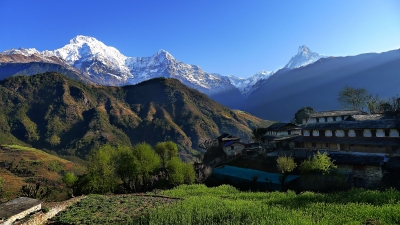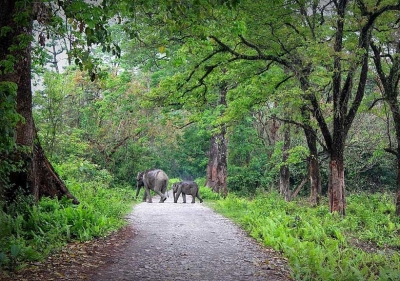What is Sagarmatha National Park famous for?

Set up in 1976 as one of the earliest protected areas in Nepal, the Sagarmatha National Park (also known as Mount Everest National Park) is spread across an area of more than 1,100 sq km. Marked by majestic mountains, dramatic peaks, deep valleys, and pristine glaciers, the park is noted for its stunning natural beauty. And, one of those majestic mountains is Mount Everest, itself a major attraction of the park. The region is equally popular for its wide variety of flora and fauna. While birch, juniper, pine, fir, bamboo, and rhododendron are the flora predominantly covering the region, rare animal species such as snow leopards have made this place their home. The park was declared a UNESCO Heritage World Site in 1979 for its "Outstanding Universal Value". The sherpas-ethnic people native to the mountains of the region - have a vital role to play in the conservation of the area, by restricting hunting, etc. Equally helpful are indigenous natural resource management practices that are in place. However, degradation of the ecosystem due to firewood extraction, tourism, and development projects are causes of concern.
Wildlife
The national park is a suitable habitat for rare species such as snow leopards, red pandas, Himalayan tahrs, and musk deer in addition to black bears, monkeys, hares, foxes, and martens. Over 100 species of birds are said to be found in the region, and they include the Himalayan monal, blood pheasant, laughing thrush, sunbirds, and redstarts. Apart from these, the park is said to nurture several species of butterflies and other insects too.
Threats
According to the International Union for Conservation of Natures latest assessment cycle (2020), the conservation outlook for Sagarmatha is significant concern". It says the property is suffering from a suite of long-standing and growing threats related to tourism impact (uncontrolled development, pollution, waste management, energy demand, introduction of donkeys for transport and intrusive aircrafts) deforestation, unsustainable resource extraction, poaching and disruption to Sherpa social structures. Climate change has had its impact too, for instance, glacier melting. In addition, it is likely that rivers and other water sources in the region could be contaminated by effluent discharge, human waste, and garbage dumping Further, aspects such as quarrying and forest fire risks put pressure on an already fragile ecosystem.
Two results from the pandemic...
According to a paper published in June 2021, the lockdown in Nepal between March and July 2020 due to the corona virus pandemic had both positive and negative results. In many of the country's national parks, including Sagarmatha, it meant more freedom of movement for wildlife. But that came with a price - since lockdown also meant reduced patrolling, illegal injuring or killing of wildlife due to poaching spiked. The study also discovered "incidents of hunting, trespassing, unauthorized collection of non-timber forest products (NTFP), fishing, and collection of fuelwood “inside the protected areas spiked. The study also discovered "incidents of hunting, trespassing, unauthorized collection of non-timber forest products (NTFP), fishing, and collection of fuelwood” inside the protected areas.
Picture Credit : Google
